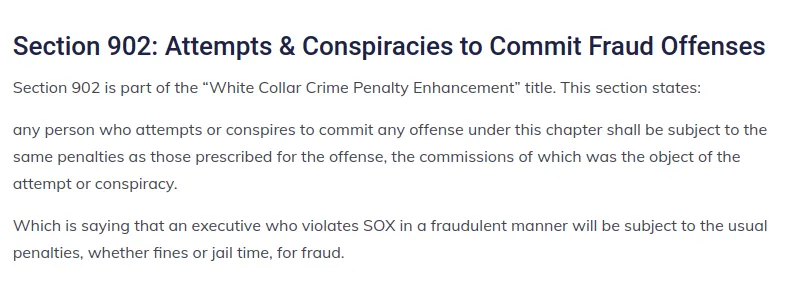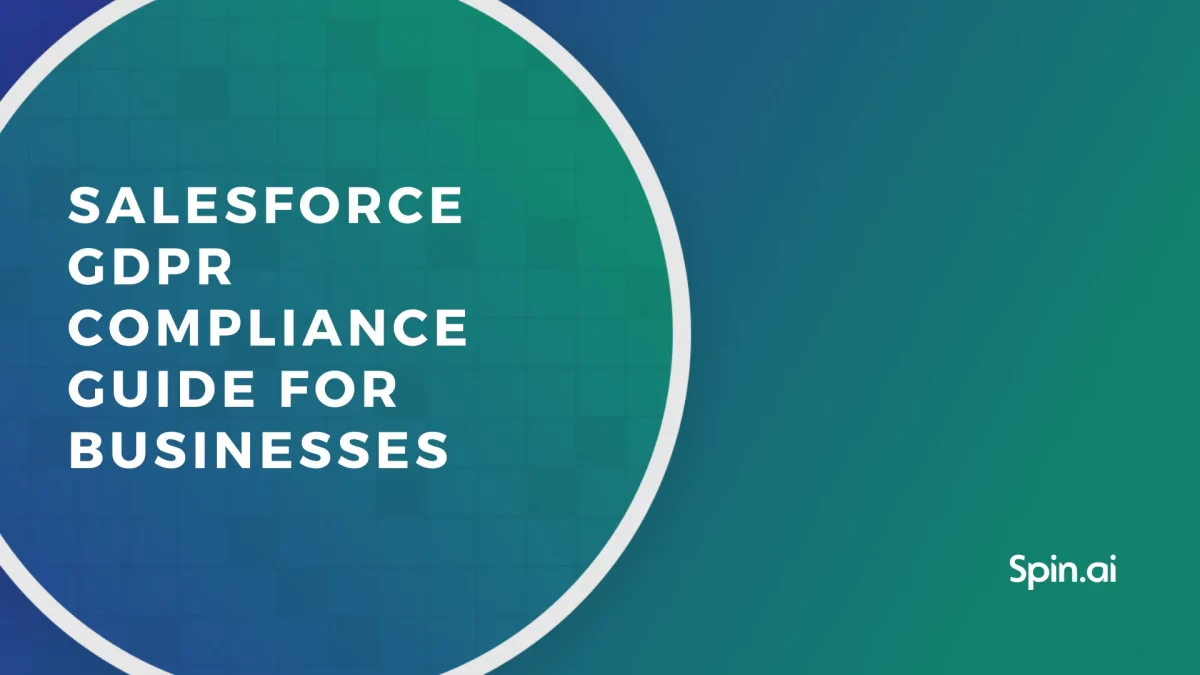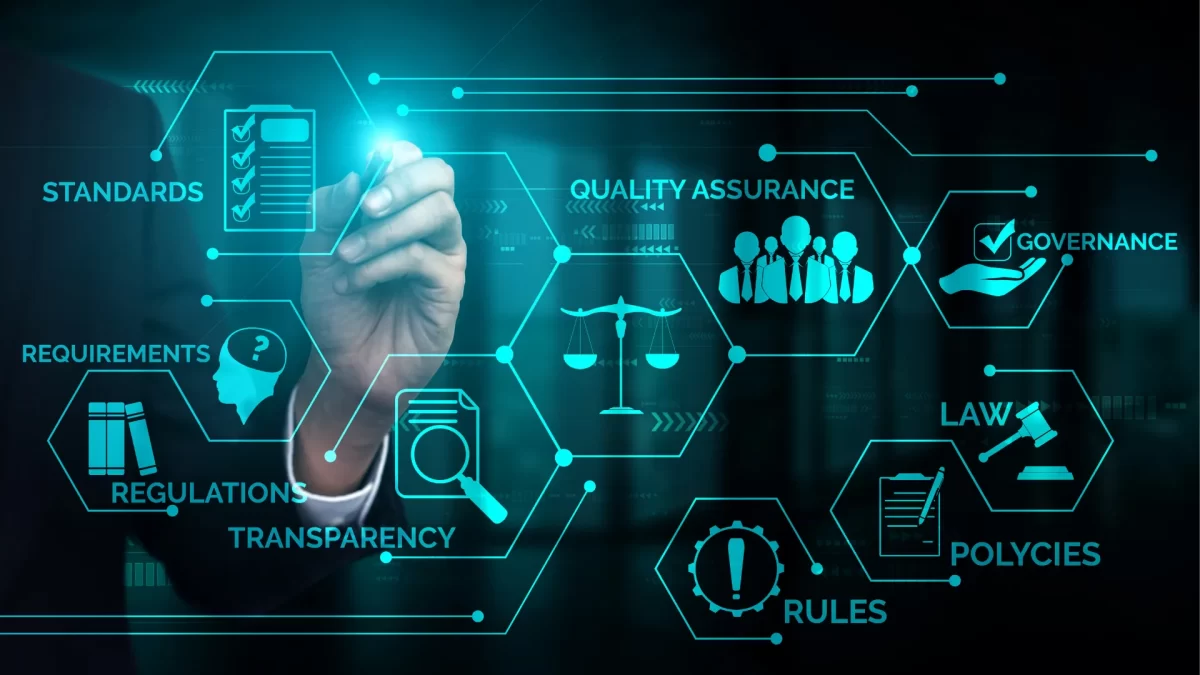The Financial Impact of Non-Compliance On Businesses

Some companies view compliance as merely a “nice to have” checkbox on an audit sheet. They consider it unimportant and not worth worrying about for their business.
However, the impact of non-compliance on businesses is tremendous. Compliance, like a good cybersecurity solution, is one of the most critical aspects of your business. Failing to consider compliance regulations, both on-premises and in the cloud, can turn out very costly.
How so?
In this post, we will consider the cost of non-compliance:
- What is non-compliance?
- What does non-compliance mean?
- What is included in this cost?
- Why is investing in data security much cheaper than the cost of compliance violations?
- How can compliance costs be reduced?
- What are the consequences of non-compliance?
Let’s take a look at these and other questions related to compliance regulations and your data.
The impact of non-compliance on businesses and the cost of non-compliance
Many business leaders may rationalize that the cost of non-compliance is lower than the expenses involved. They believe that the spending required to bring technology and data processes under compliance exceeds the potential costs of non-compliance.
Comparing the cost of non-compliance to the benefits of compliance with regulatory frameworks such as GDPR, HIPAA, PCI-DSS, and others can be eye-opening. It highlights the financial consequences of non-compliance. Also, it emphasizes the significance of aligning your business with these regulations to prevent penalties.

Years ago, compliance was a “recommendation” for your business. It was a good thing to show that you were compliant with a certain security or data regulation. It helped to make auditing and other processes easier.
In times past, compliance regulations were highly recommended, but they didn’t entail the level of possible fines that we see today. The consequences for business reputation associated with compliance were not as significant back then as they are now. Now, the meaning of non-compliance is that it can easily cripple your wallet, leaving your business with lawsuits.
This being said, many business leaders came to the conclusion that it is cheaper for the business to remain non-compliant than spend on bringing the business into compliance.
Contrast this with the state of affairs in 2020. The impact of non-compliance with legislation has become increasingly weighty and serious. This is particularly true for companies operating across multiple regions or the European Union.
As an example, when considering the significant costs of non-compliance today, one needs to only look at the costly regulatory requirements. Additionally, the fines imposed for violating the General Data Protection Regulation (GDPR) serve as another indicator of the financial consequences of non-compliance.
With what GDPR defines as a “severe” violation listed in article 83(5), the total fines could amount to 20 million euros or 2% of its entire global turnover of the preceding fiscal year, whichever is higher. This is no trivial amount when thinking of multi-national, global companies, with a global turnover in the millions or even billions.
Have companies been fined due to GDPR violations? Yes, they have in fact. If you’re curious about the fines and amounts imposed on companies, you can visit the Enforcement Tracker website. It specifically focuses on tracking GDPR fines issued to companies that have violated GDPR regulations.
Fines are only one aspect of the costs of non-compliance. What other factors does non-compliance involve?
- Business disruption – Any business activities that may be affected by compliance violation consequences or legal holds
- Productivity losses – Business productivity is generally impacted when compliance violations are levied against your business
- Revenue losses – Revenue can undoubtedly be impacted by regulatory violations
- Fines, penalties, and settlement costs – As shown above, these can be significant
- Reputation damage – Negative media coverage of data mishandling which often leads to compliance violations, fines, etc., can also damage customer confidence. This results in lost revenue that can last for years.
Since 2011 there has been a 45% increase in non-compliance costs. This is according to the True Cost of Compliance with Data Protection Regulations, a study sponsored by Globalscape and independently conducted by Ponemon Institute. The study was based on a survey of 53 multinational companies.
An average cost of non-compliance can range from $14 million to a maximum of almost $40 million based on statistics discovered by the same study.
| Non-compliance cost consequences | Average | Median | Maximum | Minimum |
| Business disruption | $5,107,206 | $4,232,786 | $20,396,716 | $1,100,745 |
| Productivity loss | $3,755,401 | $4,667,300 | $17,336,500 | $997,600 |
| Revenue loss | $4,005,116 | $3,995,194 | $19,176,931 | $ – |
| Fines, penalties & other | $1,955,674 | $1,100,500 | $5,301,500 | $ – |
| Reputation damage | Immeasurable | Immeasurable | Immeasurable | Immeasurable |
| Overall | $14,823,397 | $13,995,780 | $62,211,647 | $2,098,345 |
Non-compliance costs (findings from Globalscape and Ponemon study)
The cost of non-compliance continues to skyrocket with detrimental consequences to your business if found to be in violation of today’s compliance regulations. How does this compare to the costs of compliance?
The Cost of Compliance
With the landscape of non-compliance violation costs increasing exponentially, bringing your organization into a compliant state is the smart stance to take. In fact, the numbers show that compliance costs are now significantly less than the costs of non-compliance. This puts to rest the myth that it may be less costly to simply be non-compliant instead of investing in compliance.
To begin with, what costs are involved in bringing your organization into compliance? The following components typically make up compliance costs:
- Data protection and enforcement – Preventing data leakage and enforcing data usage policies
- Audits and assessments – Examining and inspecting the current stance of an organization compared to what is required by the compliance framework mandated
- Policy development – developing internal policies that provide the structure needed to comply with various compliance regulation frameworks
- Training – Training staff and others involved to carry out needed activities for compliance
- Certification – certifying your business against various compliance regulations
- Investment in security solutions and other specialized technologies (data loss prevention, governance, encryption, etc) – Investing in technology solutions that allow more easily bringing your business into compliance with regulation frameworks
What are the individual costs of each component of bringing your organization into compliance?
| Compliance activities | Average | Median | Maximum | Minimum |
| Policy | $399,601 | $296,032 | $583,421 | $0 |
| Communications & training | $378,590 | $289,669 | $1,711,992 | $45,600 |
| Program management | $673,010 | $530,219 | $3,305,664 | $89,104 |
| Data security | $2,010,800 | $1,359,257 | $6,592,051 | $287,556 |
| Forensics & monitoring | $1,089,455 | $832,145 | $6,241,897 | $356,212 |
| Enforcement | $917,703 | $663,839 | $7,126,414 | $106,000 |
| Overall | $5,469,159 | $3,971,161 | $21,561,439 | $1,431,425 |
Cost of compliance (findings from Globalscape and Ponemon study)
Overall, the costs of non-compliance are around 3 times as high as the costs involved with being in compliance. It helps to put into perspective how important compliance is when prioritizing business objectives. Companies can no longer afford to treat compliance as a secondary priority.
Having the right tools to help bring your business into compliance with regulatory frameworks is essential to successfully meet compliance objectives. Let’s take a look at how effective tooling helps to align your business with today’s compliance regulations and reduce the cost of non-compliance with regulations in cloud SaaS environments like G Suite and Office 365.
Reduce Your Compliance Costs
While compliance costs are far less than the cost of non-compliance, using technology solutions can help to reduce those costs even further. SpinOne provides a holistic approach to ensuring your data is protected, secure, and compliant.
SpinOne is a multi-tenant platform created by Spin Technology and designed to simplify the complexity of cloud data security. As an all-in-one platform, SpinOne combines three solutions that make business data bulletproof from security breaches and insider threats: SpinSecurity, SpinAudit, and SpinBackup.
Using artificial intelligence, SpinOne provides the functionality needed for your business to back up cloud data, prevent data leaks, audit applications and data usage, and protect against malware and ransomware.
The Spin One platform is used and trusted by large and small enterprises all over the world and helps align businesses with today’s compliance objectives.
| Compliance Objective | SpinOne Compliance Feature |
| Protect Business-Critical Data/customer data | Automatic backups 1-3x daily, version control, unlimited retention |
| Protect data from cybersecurity threats | Automated ransomware protection, risky third-party apps audit, user behavior control |
| Prevent data leak threats | Assessment of third-party apps and Chrome extensions, abnormal downloads detection, sensitive data control |
| Compliance certification | SpinOne offers enterprise-grade security for your data and is compliant with SOC 2, EU Privacy Shield, and GDPR |
| Auditing and alerting | Real-time alerts on suspicious and malicious behavior, customizable weekly and monthly reports. |
Spinbackup – Backup & Recovery
MSRP: $3/user/month
SpinSecurity – RansomCloud Protection and Backup
MSRP: $5/user/month
SpinAudit – Apps Risk Assessment
MSRP: $2/user/month
SpinOne – Apps Risk Assessment, RansomCloud Protection, and Backup
MSRP: $6/user/month
Start a free trial version of SpinOne, or Get a demo!
Frequently Asked Questions
What is a non compliance in business?
Countries create regulations to control the activities of companies. Failure to follow these regulations is called non-compliance. For example, multiple laws in certain countries protect data privacy from exposure or mandate data retention. As a company it is your duty to know the laws and regulations governing your business and make sure you abide by them.
What are examples of non compliance?
For example, a company has collected its customers’ data, including their banking details, credentials, addresses, and names. And they store it in the cloud, in a file shared with anyone with the link. That’s an example of improper storing of sensitive data.
What are the business risks of non compliance?
The risks differ depending on the country of business registration and the laws that have been broken. For example, if a business breaks GDPR it can be fined with ~$11M or 2% of annual revenue.
Was this helpful?
How Can You Maximize SaaS Security Benefits?
Let's get started with a live demo
Latest blog posts
Salesforce GDPR Compliance Guide for Businesses
November 8, 2023GDPR is a key data protection regulation document for all companies that want to work... Read more
SOC 2 Compliance Guide for Google Workspace
June 28, 2023Security and privacy are paramount with cloud computing and Software as a Service (SaaS), ensuring... Read more
ISO Compliance Guide for Google Workspace Administrators
June 22, 2023ISO compliance has been a buzzword in data protection circles for quite some time. In... Read more


